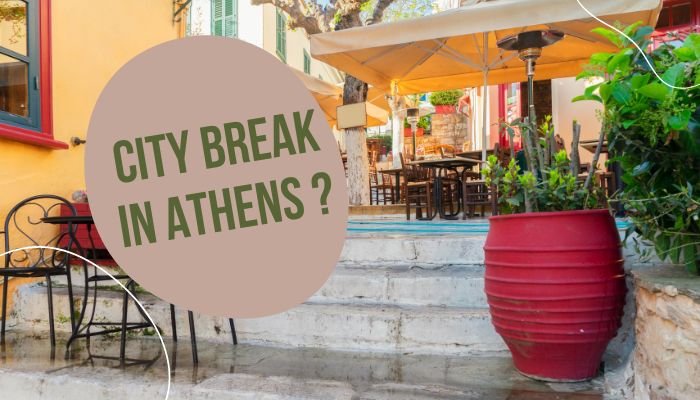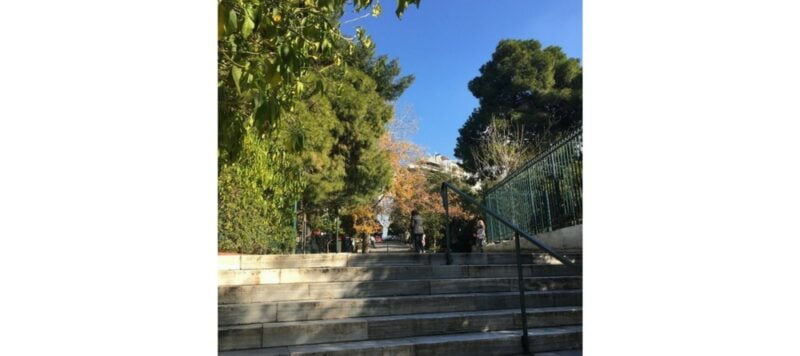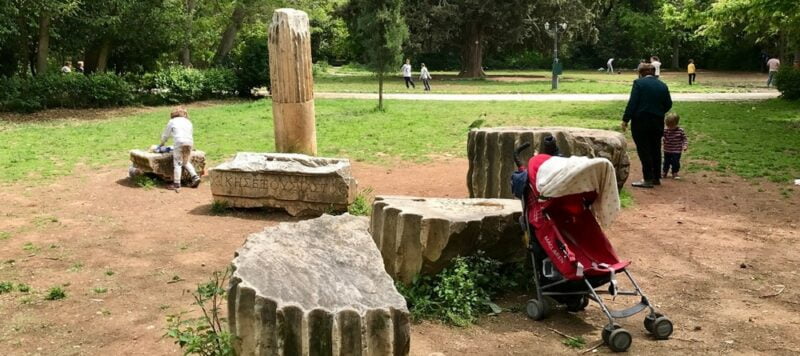No trip to Athens is complete without a visit to Monastiraki. Indeed, this district has been a central location… the heart of Athens for centuries. Today, Monastiraki, Athens’ must-see square, is known as the starting point for visits to Plaka, Psyri, the central market and the famous Monastiraki flea market.
Monastiraki Square

A visit to Monastiraki begins with a 360° tour of the square. It is a true crossroads of eras and cultures. In fact, all you have to do is look around to see several eras at a glance.
Athens’ five remarkable eras
- First, ancient Greece (8th c. BC to 4th c. BC), with the Acropolis, of course.
- The Roman period (3rd century BC – 4th century AD) with Hadrian’s library
- Then the Ottoman era (1453 to 1830) with the Tzistarakis mosque
- Followed by the Byzantine era (395-1453), also with the Pandanassa church (the little church on the square).
- And finally, the neoclassical period (1830 – 1930), magnificently represented by the metro station that still links Athens to the port of Piraeus.
Where does the name Monastiraki come from?
Monastiraki literally means “small monastery” in Greek. The church of Pandanassa you see in the center of the square was a “large monastery” in the 11th century. But during the War of Independence, it lost all its wealth and was “demoted” to a “small monastery”.
Have you noticed the brook running at your feet?
Beneath the square, at the level of the railings, you’ll notice ancient remains, as well as the course of a stream. You can still see it flowing in winter; in summer it sometimes dries up. The river Iridanos flowed through the sacred city of Athens towards Elefsina. On the outskirts of the city (the Keramikos site), life was getting organized. Many potters had their workshops and businesses on the banks of the river that supplied the clay and water needed for their craft.
History of the Monastiraki flea market
The Monastiraki flea market is also known as Gioussouroum. It’s actually the name of the first antique dealer (Noé Gioussouroum), who had his store on the square. This merchant settled in 1863, and came from Smyrna (Izmir). He had a shop full of various objects from this region. Gradually, craftsmen’s workshops were replaced by antique and second-hand shops. In 1922, a foundation of Monastiraki antique dealers was established, with a president. And it still exists today.
Monastiraki flea market: oriental influences
At the flea market you’ll find strong oriental influences. Indeed, Greece’s history and geographical location have always benefited from a mix of cultures.
Karaghiozy, shadow puppet
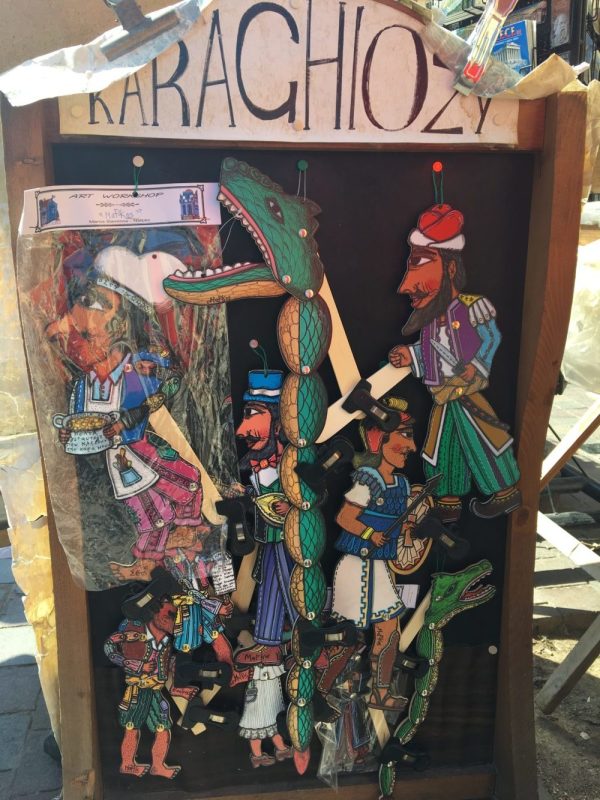
This puppet is a fine illustration of this influence. You’ve no doubt seen it in many boutiques. He’s a puppet with big black eyes, the hero of a shadow play that’s very popular in Greece. It’s not uncommon to see Karaghiozy performances in gardens or public squares. The hero Karaghiozy is poor and tries everything to survive. His right arm is bigger than his left, because that’s the one he uses to slap and fly!
The Bouzouki
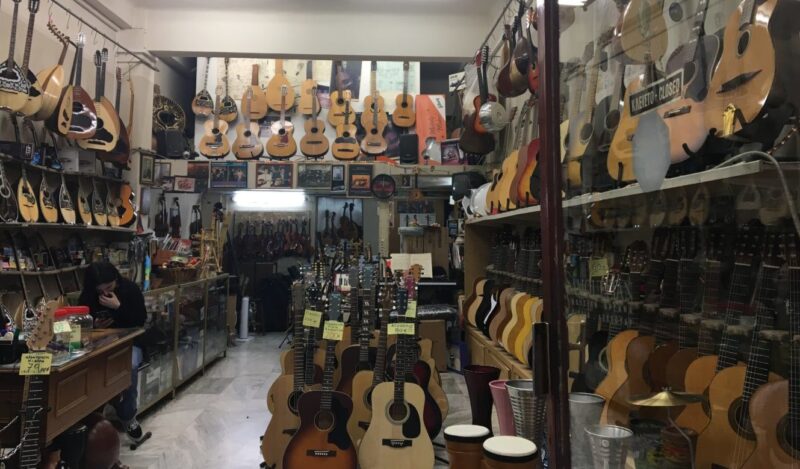
On Ifestou street, you’ll pass a Bouzouki and guitar store. Bouzouki is both the name used to designate the instrument (a kind of lute) and the musical style. This is traditional Greek music brought by Greek refugees from Asia Minor in 1922. It was quickly integrated into Greek culture. Even today, many places offer Bouzouki evenings, where musicians and singers liven up the evenings. The Greeks also dance to these tunes late into the night.
Avissinas Square: the heart of the Monastiraki flea market
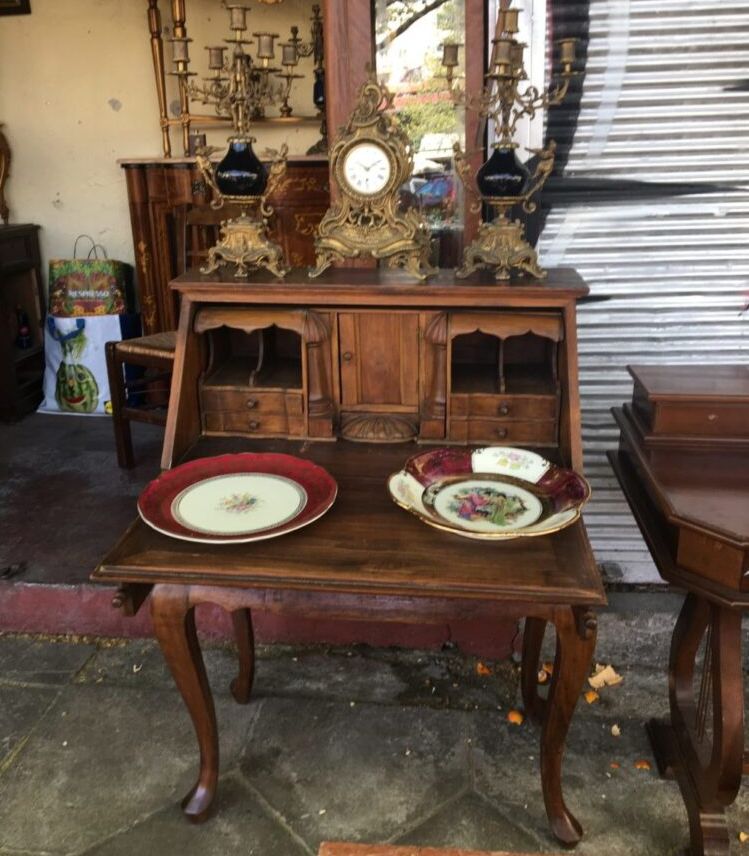
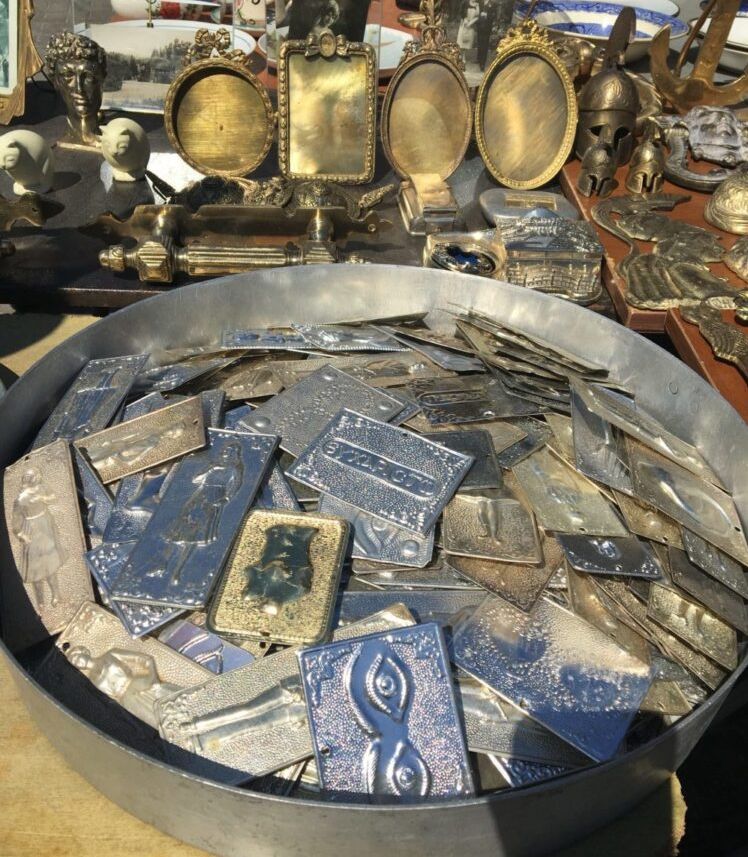
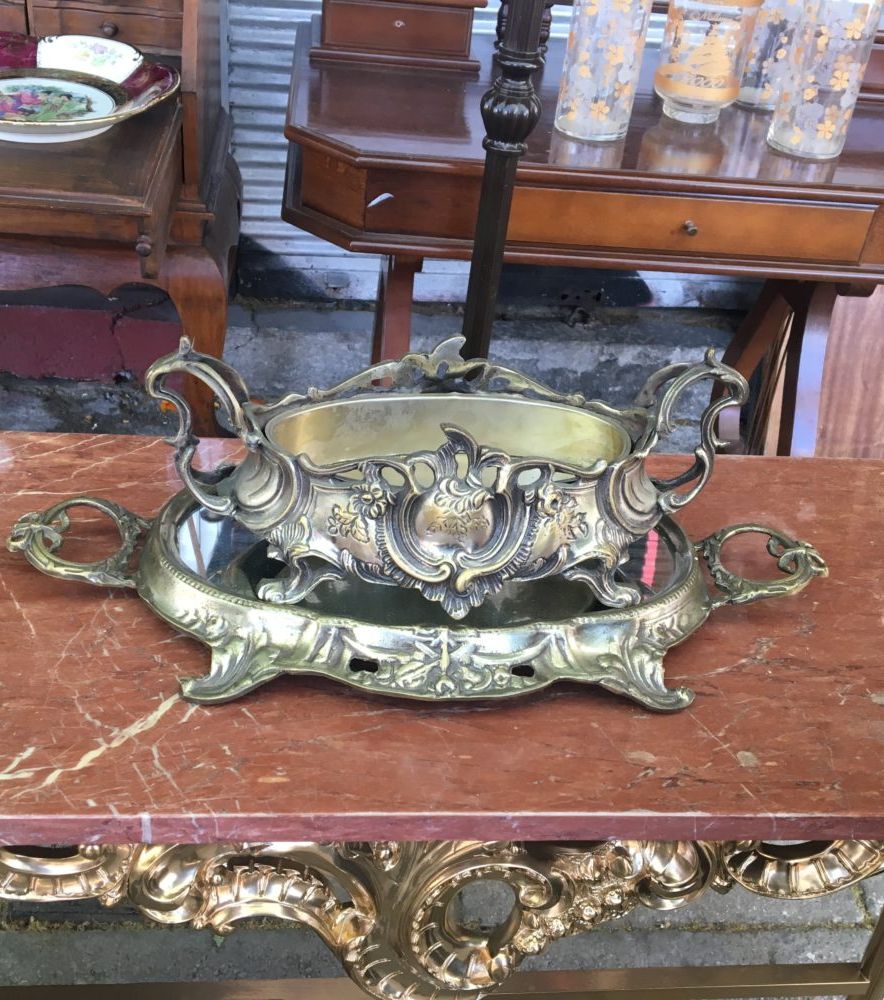
Photos Flea Market at Monastiraki © Sophie B.
The name of the square comes from Abyssinia, the region of Ethiopia from which some of the antique dealers originated.
The square is home to “real” antique dealers. They feature objects from Greece, the East and the West. They were traditionally brought back by navigators, who returned from their Mediterranean voyages with antiquities from the various places they had crossed.
You’ll find both furniture and lots of practical, unusual, useless and decorative objects. Among our favorites are the ex-votos found in churches. These illustrations, struck in metal, depict a leg, eyes, houses… depending on the prayer to be addressed (healing, fertility, luck…).
Flea Market in Normanou street
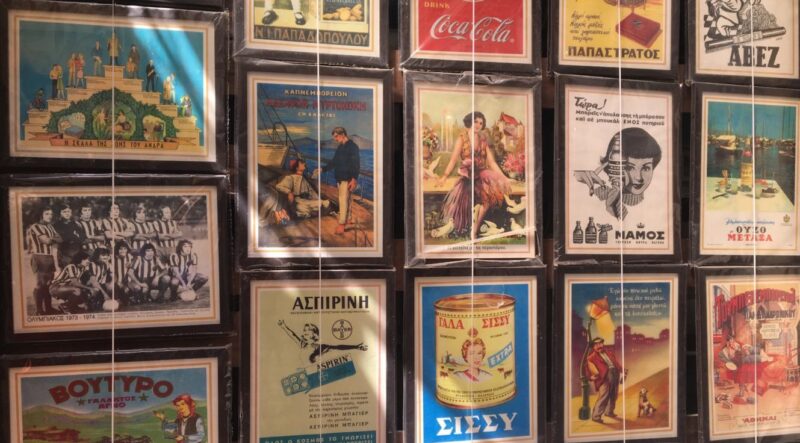
This street has more of a “brocante” feel to it. These are more 1950s-60s items. Fans will appreciate the records, posters, toys and even motorcycles from those years.
There is also a TAF bar, well worth a visit for a drink. In fact, it’s also a modern art gallery, housed among the neighborhood’s old houses. There’s even a tree growing inside!
Everyday objects in Karaiskaki street
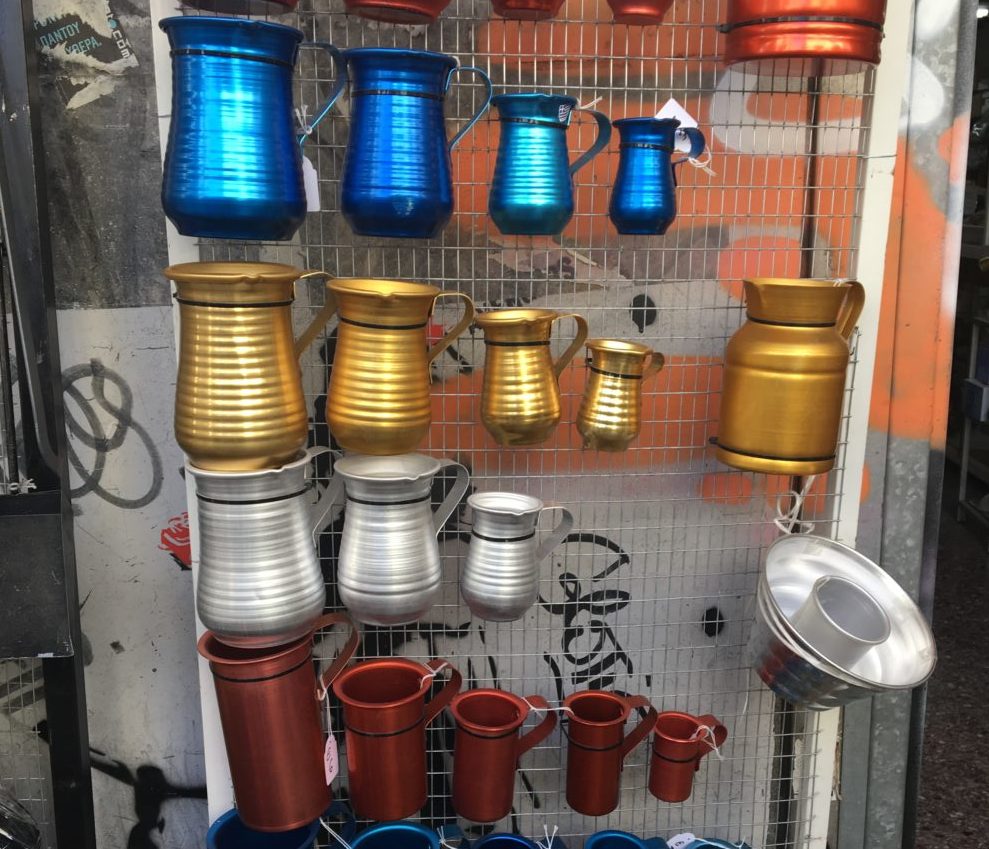

You can then cross Ermou Street and go up Karaiskaki Street. A different atmosphere again… The stores on this street are a veritable bazaar. From chairs to everyday objects, you’ll find pewter wine carafes and briki (for making Greek coffee).
At the end of the street, Platia Iroon
It’s the perfect place to take a break. If you are a little hungry, you can enjoy a Koulouri (round sesame buns) at Koulouri tou Psyri. Or a bougatsa (cream puff pastry) on Iroon Square.
And if you’re really hungry, there are plenty of tavernas to choose from (see the addresses in our article on Psyri).
Discover other neighborhoods around Monastiraki such as:
Sophie B.
Updated April 18, 2024

